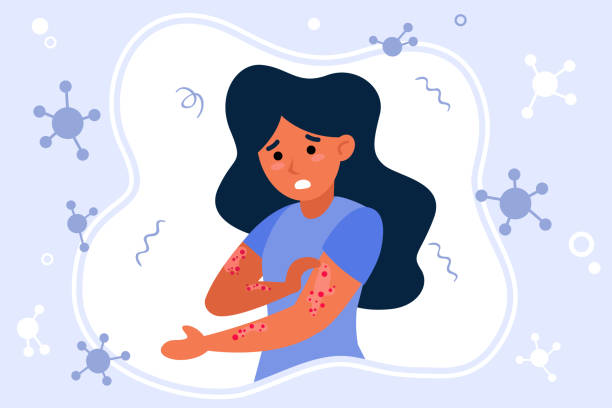What do you know about Dermatitis?
What do you know about Dermatitis?
Dermatitis refers to skin inflammation and irritation. It is a common skin condition in which your skin looks dry, red, and swollen with rashes. Dermatitis can occur in many forms and causes itch, blister, ooze, crust, or flakes. Topic dermatitis (eczema), dandruff, and contact dermatitis are examples of this type of dermatitis. It also depends on the form of dermatitis. However, dermatitis isn't contagious, but it can make you feel uncomfortable and self-conscious. Some types of dermatitis are seen more common in children, or others are more common in adults. You can get relief through medications and topical creams. Moisturising regularly can also help to control the symptoms and gives relief a bit. Treatments include medicated ointments, creams, and shampoos.
Symptoms of Dermatitis
The symptoms of dermatitis can vary and depend on the type of it. It may range from mild to severe and look different. Dermatitis's symptoms also depend on the affected area of your body. Not all people experience similar symptoms.
The common symptoms of dermatitis include:
- Rashes
- Itching
- Dry and cracked skin
- Painful skin, with stinging or burning
- Redness
- Swelling
- Irritation
Types of Dermatitis
There are many different types of dermatitis. Below are the most common:
Atopic dermatitis - Also known as eczema, this skin condition is usually run in the family and develops during infancy. People with eczema will likely experience rough patches of dry, itchy skin.
Contact dermatitis - Contact dermatitis occurs when your skin comes into contact with a substance and causes an allergic reaction or irritation. It is an allergic reaction to your skin. Further, this allergic reaction develops into rashes and turns into burns, stings, itch, or blisters.
Dyshidrotic dermatitis - With this type of dermatitis, your skin can not protect itself. It causes itchy, dry skin, often accompanied by small blisters. It appears mainly on the feet and hands.
Seborrheic dermatitis - also called cradle cap in babies, this type is most commonly found on the scalp, though it can also occur on the face and chest. It often causes scaly patches, red skin, and dandruff.
Other types of dermatitis
Some other forms of dermatitis are:
Neurodermatitis - In this dermatitis, your skin becomes itchy and often triggered by stress or something irritating the skin.
Nummular dermatitis - It causes oval sores on the skin, often occurring after a skin injury.
Stasis dermatitis - It involves skin changes due to poor blood circulation.
Dermatitis neglecta - This happens due to not maintaining good hygiene.
Causes of Dermatitis
The causes may vary depending on the types of dermatitis. Some types, such as dyshidrotic eczema, neurodermatitis, and nummular dermatitis, may have not known causes.
Contact dermatitis can occur when your skin comes to contact with cosmetics, detergents, nickel, poison ivy, and oak.
Eczema can be caused by a combination of factors such as dry skin, environmental setting, and bacteria on the skin. It is also hereditary, as people with eczema tend to have a family history of eczema, allergies, or asthma.
Seborrheic dermatitis can occur due to a fungus in the oil glands. It can get worse in the spring and winter. This type of condition can have a family history.
Stasis dermatitis can happen due to poor circulation in the body, most common in the lower legs and feet.
Triggers
Common triggers that cause dermatitis to flare include:
- Stress
- Hormonal changes
- The environment
- Irritating substances
Risk Factors of Dermatitis
Factors that contribute to the chances of getting dermatitis include:
- Age
- Environment
- family history
- health conditions
- allergies
- asthma
Prevention
Wear protective clothing during work on irritants or caustic chemicals.
- Prevent dry skin by adopting these habits when bathing:
- Take baths and showers for a short time
- Only use a gentle, non-soap cleanser
- Dry yourself gently.
- Moisturize your skin
Topics
Jammu & Kashmir - History, Culture & Traditions | J&K Current Trends | Social Network | Health | Lifestyle | Human Resources | Analytics | Cosmetics | Cosmetology | Forms | Jobs
Related blogs
Burning Feet
Burning feet is a kind of nerve damage to your...Simple and Amazing Home Remedies for White skin
A disciplined approach to skincare can provide...Acne Scars and Its Home Remedies
Acne is not itself only a problem, it also leaves...Best Ways to Unclog Pores and Methods to Prevent
Pores are the small opening on the skin that...
Quote of the Day
"Time Flies Over, but Leaves its Shadows Behind"

